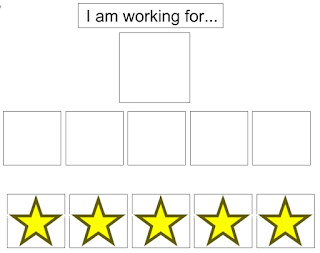At times, it can be scary, overwhelming, and quite humbling. Trust me when I say I have felt this way on multiple occasions. With that said, it is beyond rewarding to see these same students later use appropriate replacement behaviors that your team has worked tirelessly to teach so that they can develop peer relationships, access academics, and so much more.
This week we have a student transitioning into our program who is going to require a great deal of support. We were fortunate to be able to observe him prior to his transition as well as to collaborate with his current team. So where do we start when we get a new student??
#1 Building positive relationships will be our first and foremost priority. We do this through pairing ourselves with positive reinforcers and activities. By pairing yourself with items and/or activities that the child desires you are associating yourself with "good things". Essentially, your goal is to be seen as "the giver of good things". Initially, you are the one providing access to the desired items. The child learns that being with YOU means "good things" happen.
#2 Once you have paired yourself with the child, the child sees you as trustworthy. As, the child trusts that you are "the giver of good things", you can now begin to work on gaining instructional control. This may look very different depending on the child's skills. It may look like you asking them to follow a simple command or to imitate an action that is in already within their skill set. Here are some examples:
Johnny loves spinning tops. You have previously given him access to these tops (i.e. pairing). Additionally, you know that Johnny understands the command "stand up". The next time he wants the tops, you ask him to "stand up" and as soon as he does, you provide him with the tops. "You are standing! Here you go."
Ann loves microphones. You have previously given her access to the microphone (i.e. pairing). Additionally, you know that Ann imitates gross motor actions such as clapping. The next time she wants the microphone, you ask her to "do this" and then you model clapping your hands. As soon as she claps her hands, you provide her with the microphone "you showed me clapping! Here take the microphone."
This can be trickier when a student doesn't demonstrate understanding of simple commands and is not yet imitating but it can still be done. It requires you to observe the student and note what he can do. Can he push the home button on the iPad? Does he eat a preferred snack such as goldfish crackers? Will he lift a curtain to gain access to materials? By identifying what he does do, you can then request him to imitate any of these actions with the command "do this". As soon as imitates, he is provided with access to the desired item or activity.
Once the student begins to follow your command or modeled action, you can introduce a token reinforcement system.
or
Token Board (One way to increase engagement and buy in for the system is to buy small tickers or save some small google images of favorite characters, laminate, and then add velcro to those to use as the tokens rather than the stars or thumbs.)
or

the Working4 app which is on iTunes. I love that I can quickly save a google image or use my camera roll to quickly modify my token board. Definitely, worth the $1.99 investment!
Initially when I introduce a token system, I start with a 1 or 2 token system with fast, consistent, and frequent reinforcement. It's often within one or two sessions that we are able to move to 5 token system. Remember, if you are the "giver of good things", your student will trust you but that means you have to follow through! After the token board system has been in place for a few sessions, it's critical that you begin to vary the reinforcement. You may give 3 tokens when the student follows only one command or you may give one or (gasp) none. The key is to remain the trustworthy "giver of good things".
My plan for my next blog post it to talk about "structure" and what that looks like when we are shaping behavior. So stay tuned!
Becky

